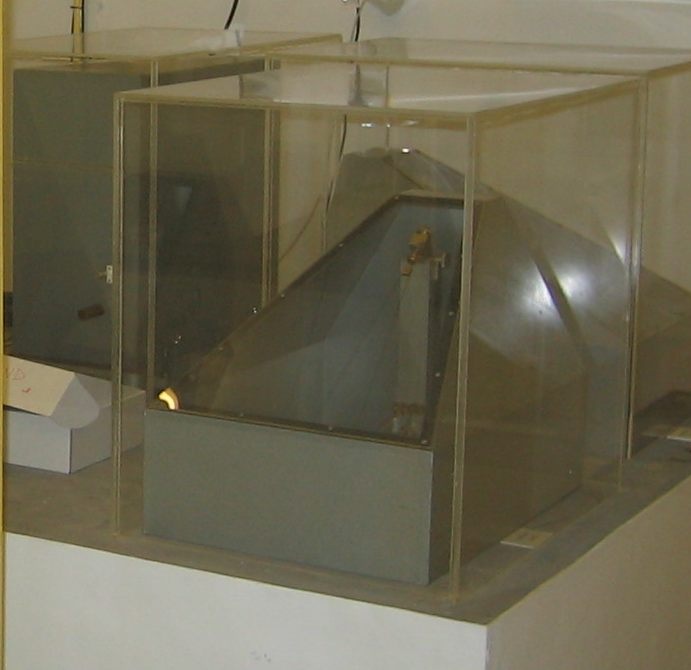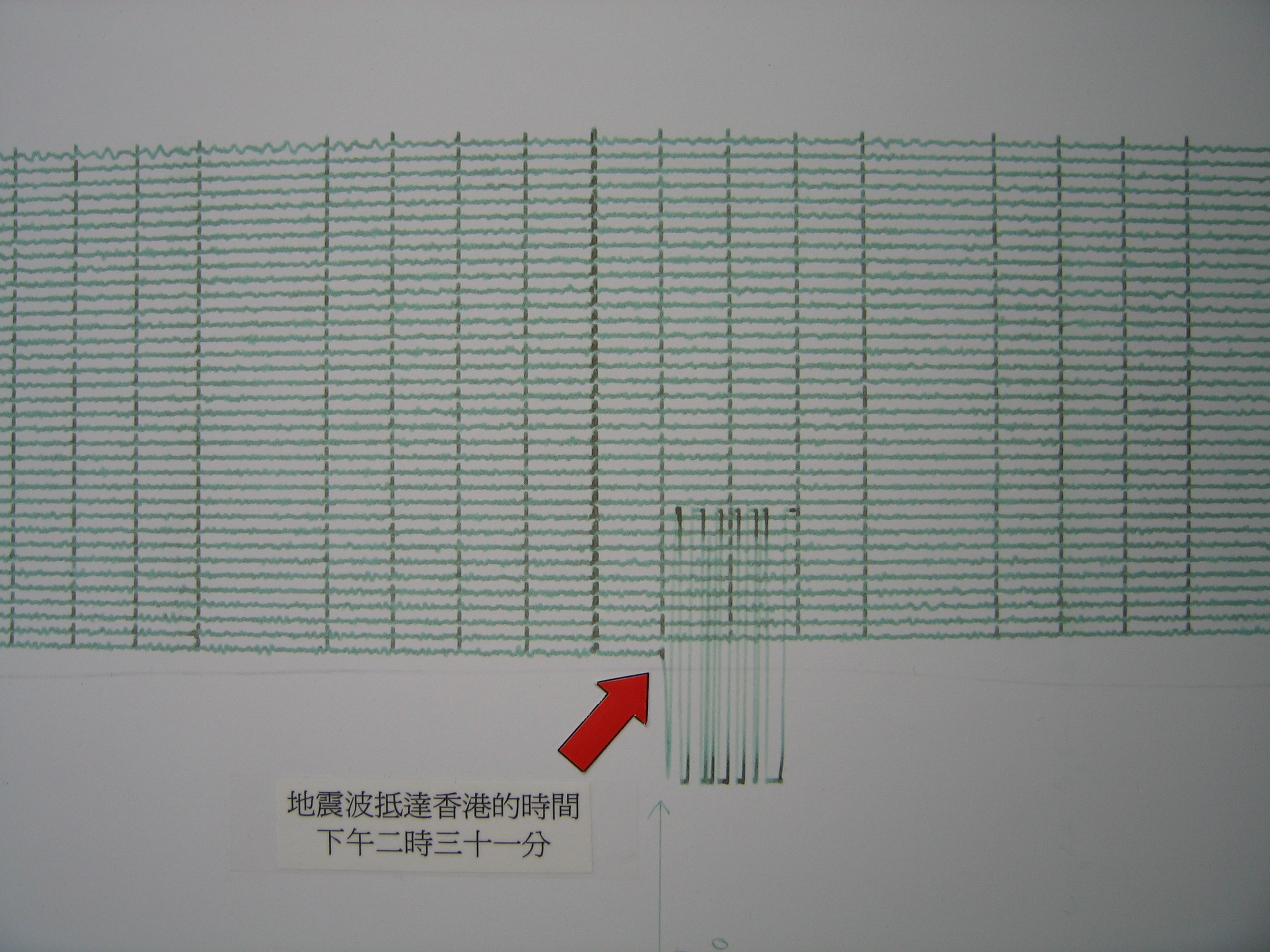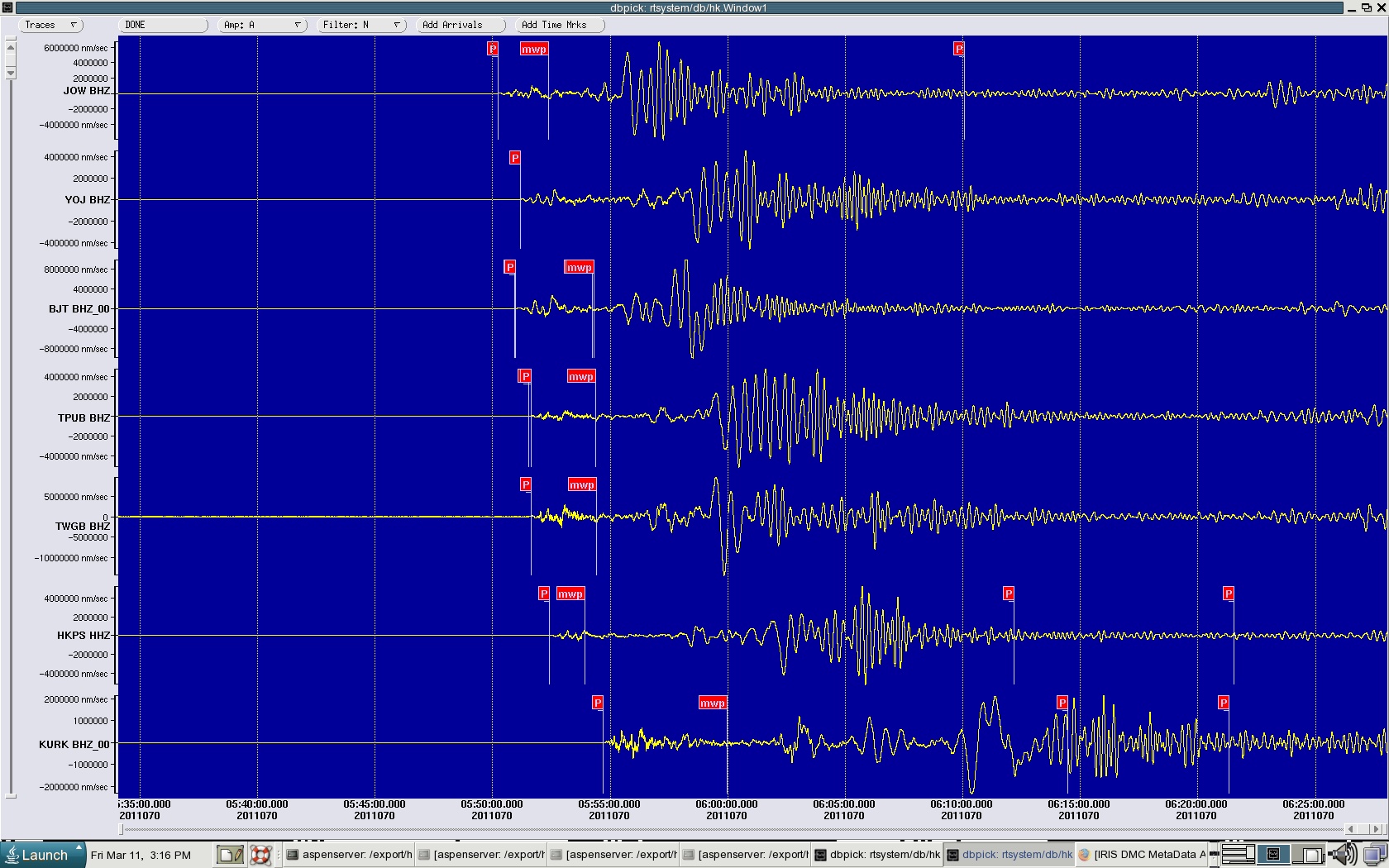The Observatory decommissioned its old analogue long-period seismograph
1 June 2011
On 31 May 2011, the Hong Kong Observatory decommissioned its Lamont-Doherty analogue long-period seismograph which has been in use for 53 years, marking a milestone in the history of earthquake monitoring in Hong Kong.
In the 1910s, the Observatory already realized the importance of having equipment in order to monitor the occurrence of earthquakes. With its perseverance, the Observatory succeeded in installing the first seismograph in Hong Kong in 1921 and constructing a cellar in 1923 to house the seismographs to minimize environmental noise and enhance detection capability. As the equipment was lost in the Second World War, the Observatory operated a set of replacement seismographs after the war until the equipment was no longer serviceable in 1976. During the International Geophysical Year of 1958, the Hong Kong Observatory cooperated with the Lamont-Doherty Observatory of the Columbia University of USA to install a set of seismographs in Hong Kong, which became the third set of long-period seismographs ever used by the Observatory. The Observatory has operated this equipment for detecting earthquakes worldwide since then.
Apart from using long-period seismographs to detect distant earthquakes, the Observatory established in 1979 a local short-period seismograph network with three stations in order to monitor earthquakes in the vicinity of Hong Kong. With the assistance of the Geotechnical Engineering Office, the network was expanded later to eight stations in 1997 to enhance detection capability and accuracy.
In 2010, the Observatory commissioned the Po Shan broadband seismograph station located inside a deep tunnel to eventually replace the Lamont-Doherty seismograph. Enlisted in the Global Seismographic Network, the state-of-the-art Po Shan seismograph system engages in real-time global seismic data exchange. The system also enhances the Observatory's capability to detect earthquakes in the South China Sea and supports early warning against tsunamis. The Po Shan seismograph system is now fully operational. As a new service based on the system, the Observatory has commenced issuing computer-generated earthquake messages on Twitter since early 2011 to enable members of the public to have early information of earthquake occurrences.
The Observatory's Lamont-Doherty analogue long-period seismograph has now completed its historical mission and boasts the longest service of any earthquake monitoring equipment of the Observatory on record. The seismograph will be listed as a heritage item of the Observatory for long-term conservation.

Figure 1: Lamont-Doherty analogue long period seismograph (1958-2011).

Figure 2: Seismogram recorded by the Lamont-Doherty seismograph during the Wenchuan Earthquake in 2008.

Figure 3: State-of-the-art seismometer at Po Shan Seismograph Station since 2010.

Figure 4: Seismograms recorded by the Observatory's seismic data processing system during the magnitude 9 earthquake near Japan on 11 March 2011. The second trace from bottom was recorded by the Hong Kong Po Shan Seismograph Station. Other traces were recorded by overseas seismographs.